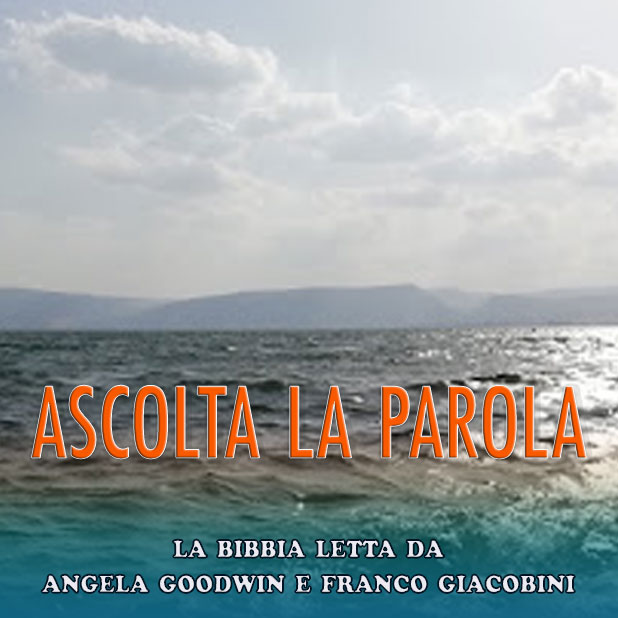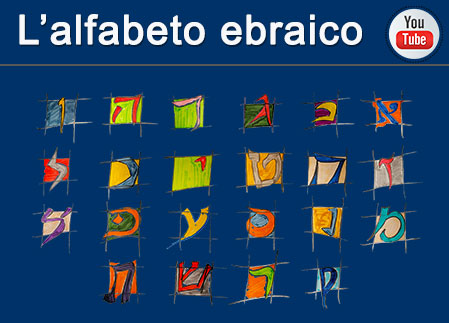Jews and Christians Discussion Group in the Central Committee of German Catholics
Germania 26/04/1990
The factsFor the part five years the "Carmel of Auschwitz" has been a source of painful controversy between Catholics and Jews. During Pope John Paul II's visit to the Benelux countries in May 1985, an association known as "Kirche in Not/Ostpriesterhilfe", which helps support the Church in Eastern Europe, solicited donations with a pamphlet bearing the title "Your gift to the Pope: a convent in Auschwitz". The pamphlet referred to the existence of a convent of barefoot Carmelite nuns in the building of the old "theatre" of the Auschwitz concentration camp. This building, adjacent to the fence around the Auschwitz I concentration camp, was the piace where the Zyklon B poison gas was stored during the years of extermination and was part of the overall Auschwitz complex comprising AuschwitzBirkenau (Auschwitz II), the extermination centre three kilometres away, and many other camps.
The disclosure that the building houses a Carmelite convent evoked an immediate protest from the Jewish community, first in Western Europe, then in Israel and other parts of the world. Prominent Catholics, too, raised objection. In order to defuse the situation, senior Catholic and Jewish representatives met to discuss the matter. In a joint statement issue in Geneva on 22 February 1987, the two sides agreed to establish a Centre for information, education, contact and prayer outside the boundaries of the Auschwitz and Birkenau camps. The Centre was also to be the home of the convent of Carmelite nuns. But although it was agreed that the project would be completed within two years, there were no signs of any action being taken.
After the two years had expired the time limit was extended by six month. In this period, too, there were no signs of any steps being taken to build the centre and relocate the convent. In the autumn of 1988, however, a cross about 7 metres high was raised in the convent's compound, opposite the place where Polish martyrs were murdered.
The controversy escalated in the summer of 1989 through the activities of local Jewish groups. The situation did not improve until the Vatican Commission for Religious Relations with Jewry endorsed the Geneva agreement on 18 October 1989. And the tension was further eased when the Polish Government cal/ed for on early solution to the problem. The fact that a plot of land has meanwhile been purchased is a hopeful sign.
Apart from relocating the convent and building the Centre, it is necessary to clarify the differing Jewish and Christian interpretations of symbolism and spirituality, which are the real source of the conflict. This is the purpose of the following comment, especially in the light of the debate on this problem in the Federal Republic of Germany.
Comment
No other name recalls Hitler's extermination camps more vividly than Auschwitz. Originally built to eliminate the Polish it became the site where millions of people were murdered: Poles, Russians, Hungarians, Germans, Dutchmen, Belgians, French, Sinti and Romany, "Gypsies", but above all Jews, merely because they were Jews. Unlike the other camps, Auschwitz, being the largest Jewish cemetery in Europe, symbolizes the Holocaust, the Shoah, that is to say, the attempt to exterminate the Jewish people.
Especially in German-speaking countries, Auschwitz also stands for the catastrophe in Christian-Jewish history and exhorts a change in the Christian attitude. What the theologian Johann Baptist Metz said at the 1978 Catholic Convention in Freiburg is an obligation we Christians still have to honour: "We Christians can never go back beyond Auschwitz; but on closer examination, we are no longer able to forward beyond Auschwitz by ourselves, only together with its victims".
This is why we in particular, Catholics and Jews who have been discussing our problems for the past 20 years, are saddened by the conflict that has arisen over the founding of a Carmelite convent in the Auschwitz extermination camp. It has damaged because those promises have not been kept the credibility of the Catholic Church. The conflict has at the same time strained the bond of unity within the Catholic Church. It has shown how heavy the burden of history weighs on us all, though of course in quite different ways upon Christians and Jews. But we have al-so learned that our perceptions of each other's faith and way of life are quite different. It is difficult therefore, to respect them and to take them seriously.
To the Jews among us, Auschwitz is the very place and name which stands for the Shoah, the manifestation of evil, of the incomprehensible silence of both God and man. ft is no place for subsequent symbols or quick interpretations, for in the Auschwitz of today the reality of the past is present. Auschwitz is a tangible symbol. "One need only stoop to find the ash that fell from the sky at that time and scattered the wretched remains of thousands and thousands of Jewish children, silently and wisely, into the four winds. "On the soli of Auschwitz we can hear the voice of memory which 'burns but never dies away' (Elle Wiesel). If something is added as a symbol it may diminis h the force of Auschwitz's message. The symbolism of Auschwitz has the most telling effect if it is kept free from additional symbols. This absence and avoidance of symbols also manifests a solidarity with all the victims, as explained by Theo Klein, head of the Jewish delegation to the official talks on the 'Carmel' conflict. 'We (Jews)', he said 'have never denied that Poles, Russians, 'gypsies' and others died there. We do not insist that Auschwitz be made a synagogue... (The dead) were Catholics and Protestante, Jews, Muslims and free thinkers. None of there groups can claim an exclusive right to commemorate them". Auschwitz must be protected from any group or institution laying claim to the truth and seeking to use Auschwitz for its own purposes.
Our respect for those who suffered and died at Auschwitz, but also for the Jews as the people of God's covenant, forbids us Christians at this site to resort solely to our Christian forms of liturgy and spirituality. In exercising this restraint, the renunciation of symbols can be a positive sign. There are dimensions and depths of suffering and of suffering in relation to God which make silent abhorrence and reflection the appropriate response.
We Christians must appreciate the seriousness of the question which non-Christians ask about our theology of the Cross, which has changed for us from a pillory to a token of redemption. Throughout history many non-Christians, especially Jews, have experienced the Cross as a symbol of persecution: through the Crusades, the Inquisition and compulsory baptisms, the pogroms and persecutions. Thus we must learn to realize that for many people the Cross means something quite different from the message we intend it to give. Our symbols, intentions and criteria cannot serve as the standard for all others.
We Christians, too, can perceive the Auschwitz devoid of symbols as a symbol in itself. Its emptiness can serve as an eloquent remembrance of the forsakenness, the lack of solace and the Terror of the many who had to live and die there. A convent might cover up a Christian presence to a degree that was not there before. Those who ask what it is about Christian nuns praying and making atonement there that is so disturbing to the Jews must learn to understand that it is improper for us to subsequently adopt Auschwitz for Christianity or even give the impression of doing so. Prayer for the victims of Auschwitz is independent of the place Auschwitz; expiation for past atrocities is not tied to the place where they were perpetrated.
True, it is a tradition of Christian piety going back to the early history of the Church to erect the Cross or a church at place of martyrdom or over the graves of martyrs. But that tradition cannot be continued at Auschwitz. It would seem presumptuous because the dead at Auschwitz are not "our" martyrs, even though there were men and women among them who died as Christians. Furthermore, it would distort the fact that it was baptized people who became perpetrators. However understandable the longing of Christians: to place the abysmal suffering of Auschwitz under the Cross of Christ so that the light of hope from the Resurrection may radiate over this place of incomprehensible Go d forsakenness and contempt for mankind; however great the seriousness with which the Polish people wish to make that site a symbol of their own martyrdom and renewal, Auschwitz must and for all time be preserved as the place where millions of Jews died, abandoned by an indifferent world and by the Churches, who, after all, live with the Jewish people in one and the same Covenant of God.
We Christians must genuinely accept the burden of history. "For history is not something external it is part of the Church's own identity and can remind us that the Church, which we profess to be holy and mystery, is also a Church guilty of sin, which needs to stop and reconsider" (German language Bishops Conferences marking the 50th anniversary of the pogrom of November 1938). In memory of Auschwitz we Christians must understand:
that the murder of millions of Jews is so closely associated with the name of Auschwitz that the voices of the members of precisely that people must not be ignored when " deciding" on Auschwitz;
that we have forfeited much of our credibility because, as religious communities, we at that time in spite of the exemplary conduct of individuals ignored the suffering of the Jewish people;
that we must strive to change our attitude and renew our relationship with the Jewish people;
that Auschwitz also stands between the Polish and the Jewish people and needs to be remembered as a place of Polish suffering;
that and this may be the most difficult of all ours are not the only criteria, nor the only appropriate ones, no matter how sincerely we consider them to be the true ones.
As Jews and Christians we are convinced that Auschwitz must not be allowed to become a place of superficial inspection or ideological instruction. It will not be easy to preserve it in such a way that it keeps alive the memory of the victims and enable visitors to show respect in their own different ways. The proposed Centre outside the camp should help achieve this aim. This undertaking and the transfer of the convent and the cross are necessary steps which can demonstrate the seriousness of the Catholic renewal in terms of the Church's continuing affinity with the Jewish people. The decisive change in the relationship of the Catholic Church with the Jewish people (and with individual Jews), which, as Pope John Paul II said on visiting the great synagogue in Rome, began with the Second Vatican Council faces the test: whether we Christians as the "Church after Auschwitz" are prepared for and capable of reversal, of Umkehr. This must be proved precisely at Auschwitz.
26 April 1990
Generalsekretariat des Zentralkomitees der deutschen Katholiken. Hochkreuzallee 246,
D 5300 Bonn 2
240 visualizzazioni.
Inserito 01/01/1970
Relazioni Ebraico-Cristiane
Ultime novità nel sito
- 19/04/2020: Articolo - Lenigma della Maddalena
- 23/02/2020: Articolo - Il locus amoenus nelle catacombe ebraiche e cristiane di Roma
- 16/02/2020: Articolo - Il profetismo nel Vicino Oriente antico
- 13/02/2020: Articolo - I Profeti della Cappella Sistina
- 09/02/2020: Articolo - Gerusalemme e la Terra Santa di Israele


